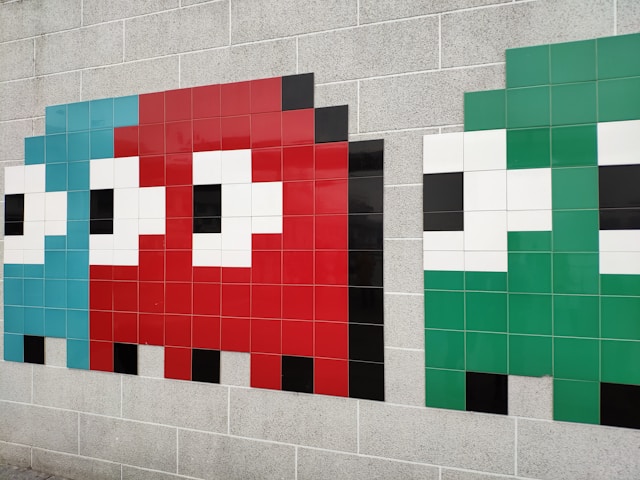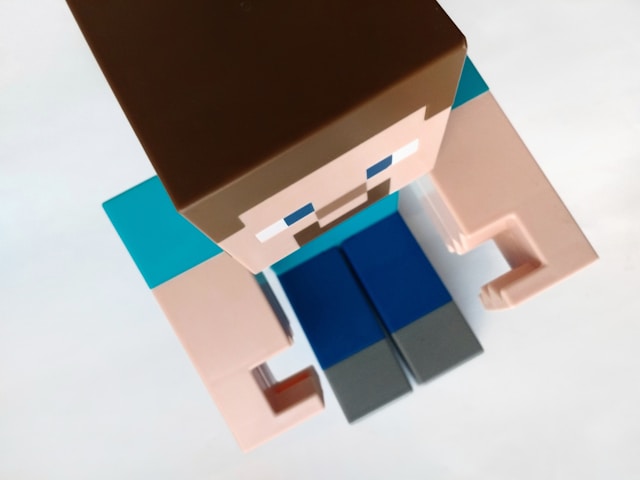Imagine a video game as an elaborate, intricate universe. Now, picture the guiding force at its center, orchestrating every aspect of this digital cosmos – this is a game engine. It lays down the fundamental framework on which developers construct their diverse virtual landscapes. Handling everything from physics and rendering to scripting and animation, even artificial intelligence falls under its domain.
The core purpose of such an engine? To simplify the labyrinthine process of video game development into manageable chunks, freeing designers and artists to craft immersive experiences rather than tangle with the intricacies of low-level network coding.
Now consider Minecraft—a world-renowned gaming phenomenon—as a case study for understanding game engines’ importance in more depth. You might ask: what engine drives this blocky yet expansive world? The answer lies not in any typical off-the-shelf software but within a custom-built solution—engineered predominantly using Java—that balances sophistication with simplicity allowing seamless cross-platform operation.
This choice isn’t arbitrary; it’s fundamental to Minecraft’s gameplay itself—enabling limitless exploration and creation possibilities within a sandbox environment. And that’s how one discerns why selecting the right game engine can be pivotal – it defines your user experience.
Exploring the Minecraft Gameplay: A Brief Overview
Submerged within the labyrinthine matrix of Minecraft’s gameplay lies an artistry that thrives deep in its digital architecture. This virtual tapestry is intricately woven from a plethora of complex algorithms, born out of a highly advanced game engine. The elasticity of this engine stretches and contorts the limits of what can be realized within a voxel-based cosmos, raising intriguing queries about its design. What indeed comprises Minecraft’s game engine? An orchestration as sublime as it is technical, built firmly on the sturdy foundations of Java and lightweight Java game library (LWJGL). It delivers not merely a gaming experience but an immersive terrain that ensnares players with relentless dynamism.
In the world of Minecraft, gamers find themselves teleported into an algorithmically birthed realm teeming with diverse landscapes, entities, and resources. Its distinguishing factor stems from its ceaseless potential for creation – offering participants a blank canvas to roam limitlessly in their imaginative exploits. Nestled within this blocky interface is where the true prowess of Minecraft’s game engine resides: marrying graphical elegance with simplicity itself. A harmony so bewitching it spawns an unparalleled gaming journey; each play session crafting unique narratives that stand apart from one another.
The Technical Aspects Behind Minecraft
The nuanced intricacy veiling Minecraft is frequently misapprehended or undervalued, predominantly because of its blocky, simple visual aesthetics. Universally acknowledged as a pastime embraced primarily by the juvenile populace, the question ‘Is Minecraft a children’s game?’ often overshadows the deep-seated technical facets that form its very essence. In reality though, beneath its user-friendly facade lies an intricate network underpinned by elaborate coding systems and advanced gaming engines.
A pivotal technical attribute of Minecraft resides in its application of procedural generation. This entails generating data through algorithms rather than manual input. To break it down further – it indicates that the vast world you wander through within the game comes to life mathematically; implying that with each exploration step taken, more of the game unfolds itself organically into existence. The bedrock for every creeper blast, redstone circuitry and villager trade is an extensive labyrinthine matrix of codes and algorithms which morph this ostensibly simple amusement into a wonderous spectacle exemplifying contemporary technological prowess in gaming design.
Delving into the Core of Minecraft: LWJGL
At the vibrant core of Minecraft’s technological prowess sits the Lightweight Java Game Library (LWJGL). This pivotal pillar underpins the game’s development, with LWJGL proving instrumental in providing unmediated access to foundational APIs for engagement with systems such as OpenGL, OpenAL, and OpenCL. Essentially, LWJGL paves way for high-performance, modular gaming structures within the confines of Java programming language – an assertive trait that Minecraft leverages extensively. This compact yet sturdy tool enables developers to unearth a bounty of cross-platform potentialities.
In the realm of Minecraft, LWJGL operates as an indispensable conduit between gameplay and hardware functionality. Masterfully orchestrating tasks like window management and input handling along with audio and graphic rendering – its most notable attribute – it is LWJGL that breathes life into every interactive instance you encounter in your virtual explorations within Minecraft. The peerless performance coupled with deep-seated customizability proffered by this library ensures unbroken progression and limitless expandability for Minecraft. It empowers ongoing evolution without ceding any ground on core gameplay experience or quality thereof. The subtle complexity introduced by LWJGL into Minecraft’s game engine illuminates reasons behind its phenomenal success and immense scope for endless possibilities.
Understanding LWJGL: The Backbone of Minecraft

The Java Game Library, known by its initials LWJGL, a featherweight structure of paramount importance to the popular game Minecraft, came into existence in 2002. It was ingeniously engineered to provide nimble software for gaming applications designed in Java – a prime factor influencing its adoption during Minecraft’s creation. This elegantly complex framework equips developers with an unrestricted passageway to potent software APIs (Application Programming Interfaces) such as OpenGL, OpenAL and OpenCL that significantly elevate the game’s operational excellence. There is something peculiar about LWJGL; despite being unburdensome it flaunts robust characteristics that enriches the interactive experience within Minecraft.
Out of several APIs embedded within this vibrant framework called LWJGL, OpenGL stands out as indispensable – this open-source graphics library grants Minecraft with capabilities of generating both 2D and 3D vector graphics at will. Such technical prowess enables the game to consistently display its iconic block-like textures along with strikingly colorful landscapes which have found profound admiration amongst the vast community of players who indulge in Minecraft. The role played by LWJGL doesn’t end here; it extends over to sound systems too – through OpenAL which empowers spatial audio functionality within the gameplay environment for an immersive auditory experience. In essence, whenever any event or action transpires inside the game world via characters or objects involved – corresponding sounds echo throughout space due credit given to this unique library thus enhancing player immersion.
The Role of Java in Minecraft’s Development
In the realm of game development, Java – a programming language celebrated for its ‘craft once, execute indefinitely’ credo – has etched out an exclusive space for itself. Minecraft stands as a testament to this fact. Blessed with flexibility and object-orientation, Java grants developers the power to construct elaborate systems without entangling themselves in convoluted code. This paves the way for expansive and detailed settings akin to those witnessed in Minecraft.
Java’s ability to be portable across numerous platforms was instrumental in it being chosen as it opened up Minecraft’s enjoyment across devices. The multithreaded prowess of Java came into play by performing multiple Minecraft procedures concurrently, thereby boosting both performance and user experience.
With its robust memory management mechanism built-in, any potential overflow issues were efficiently managed; a critical requirement considering the memory-heavy operations involved in running Minecraft. The Garbage Collector feature of Java ensured automatic removal of unused objects which led to fluid gameplay.
Furthermore, Java’s consistent updates coupled with an extensive collection of libraries played significant roles in contributing towards sustaining Minecraft’s success over time by allowing continual evolution that aligns with ever-shifting gamer preferences.
A Deep Dive into Minecraft’s Graphics and Sound Systems
At the enigmatic core of Minecraft’s engulfing and visually compelling gaming universe are its pioneering graphics and sound systems. These elements, absolutely crucial to the game’s holistic experience, present a harmonious marriage of understated design and technological wizardry. The primary reliance of the game’s graphic system on an exclusive voxel engine births a distinct blocky visual flair – now inextricably linked with the identity of Minecraft itself. Significant breakthroughs in 3D rendering at various junctures during development gave rise to minutely detailed textures and dynamic, perpetually morphing environments – an aspect greatly cherished by its player fraternity.
Simultaneously operating alongside is Minecraft’s intricate sound system that intensifies the sensory immersion manifold. It tactfully employs procedural generation techniques to yield vibrant sounds that resonate with players’ actions within this virtual realm. Ambient noises, musical triggers, reverberating footsteps – all amalgamated in delicate layers – reciprocate acoustically to the singularly ever-mutating landscapes experienced visually. The sonic mechanism within Minecraft not only heightens engagement through amplification of gameplay but also assumes strategic importance as it offers situational cues about the digital surroundings.
FAQ
The role of the game engine is to administer the various hardware and software elements, encompassing aspects like graphics, audio and physics. Within Minecraft specifically, it eases tasks such as user interface management, rendering, animation creation and artificial intelligence implementation.
As a quintessential sandbox game, Minecraft permits users to construct and engage with an interactive digital environment using distinct block types. A variety of gameplay modes are available for players’ exploration – survival mode, creative mode, adventure mode or spectator mode.
At its core foundation lies Java programming language in combination with Lightweight Java Game Library (LWJGL), crafting the framework upon which Minecraft stands. Graphics are rendered through a voxel-based system while mono and stereo sound systems breathe life into this dynamic world.
Fundamentally speaking,LWJGL – an acronym for Lightweight Java Game Library – serves as a collection of potent cross-platform libraries accessible by developers. This suite plays an indispensable role in enabling optimal performance from any associated hardware when running Minecraft – ensuring seamless gaming experiences.
The choice of utilizing Java as the backbone programming language allows cross-compatibility across multiple operating systems including Windows MacOS,and Linux.This implies that without necessitating separate versions,Minecraft can comfortably run on diverse OS platforms
Minecraft’s visual realm operates on a voxel-based system,the crux being cubic blocks constituting its world.The simplicity inherent here paves way for immense customization opportunities and variability within the game’s world.Furthermore,MInecraft is compatible with various graphical enhancements,like shaders and texture packs.
Minecraft employs mono as well as stereo sound systems.With a unique feature called positional audio,the volume of sounds can dynamically change based on player proximity to any given source.In addition,Minecraft supports customisable sound packs,enabling players to modify both its music and other associated sound effects.


